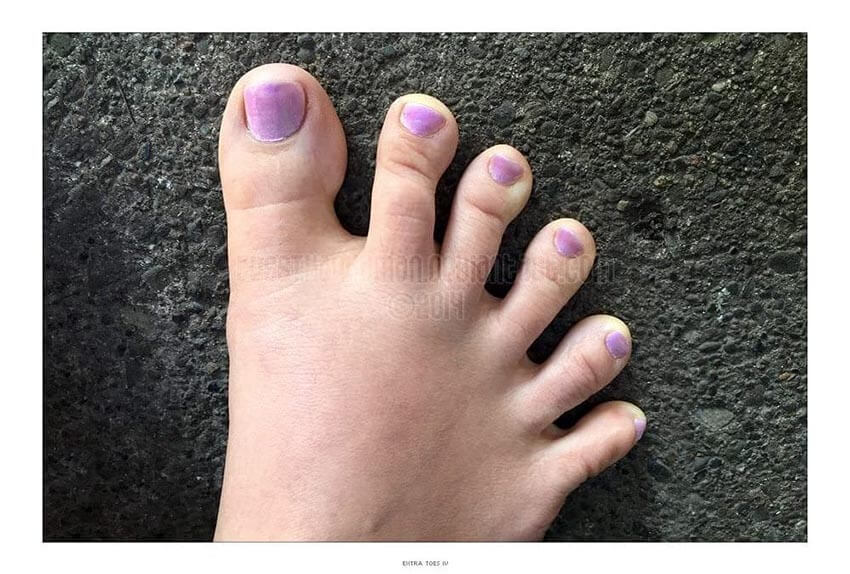What Is An Extra Toe? (Polydactyly)
Table of Contents
An extra toe (or digit) is medically known as polydactly or a supernumerary toe. It is a genetic condition resulting where the digit is duplicated, and can be fully functional or just fleshy. It may occur in the hands as well as the feet, and may involve both feet/hands. The highest number of digits ever reported was in 2010, on Akshat Saxena (from India) with a total of 34 digits (10 on each foot/ 7 on each hand). In the foot, it is more common to have an extra toe on the outside of the foot, and this is termed postaxial polydactyly.
Symptoms Of An Extra Toe
An extra toe(s) can be quite problematic for patients. The duplicated digit(s) may make fitting shoes quite difficult (or impossible) because it typically adds width to the foot. Patients can develop corns and calluses in pressure spots which may be painful. Additional toes that are fleshy and not functional can be bothersome as they tend to get caught on things, and even make putting on socks difficult. Patients with extra toes tend to be embarrassed of their feet, and affects children and young adults the most. Patients with hand involvement as well seem to be better adjusted to their condition overall.
Causes of Polydactyly
Polydactyly is genetic and may be associated with several syndromes, so a genetic evaluation is recommended.
When to Seek Extra Toe Treatment
Common reasons patients seek treatment for brachymetatarsia are:
- Pain
- Interference with walking/activities
- Difficulty fitting shoes
- Unsightly appearance
- Psychologically embarrassing
Non-operative Treatments for Short toe
Non-surgical methods for brachymetatarsia are aimed at decreasing symptoms (i.e., pain and/or calluses).
Simple treatments patients can do are the following:
- Wear supportive shoes
- Use an arch support
- Wear shoes with a wide toe box
- Modify activities
- Spot stretch shoes
Non-surgical treatments Dr. Delvadia, DPM may add:
- Anti-inflammatory Medicines: Prescription strength medicines to decrease pain and inflammation.
- Custom Foot Orthotics: Dr. Delvadia, DPM creates am orthotic with an exact mold of your foot to better align and support the foot to ease current discomfort.
- Splints or Pads: Specific pads may prevent pressure and physical irritation in shoes.
Polydactyly Reconstruction Surgery in the Foot
Depending on the toe involved and severity there are various approaches to fixing the problem. Simply, the extra digit(s) needs to be removed. Each case, however is different because not all supernumerary digits are functional and there is a varying presentation. In some cases just a portion of the toe is duplicated, and in others the entire toe will be duplicated along with the bone that it connects it to the foot (called the metatarsal). The metatarsal can be completely duplicated but more commonly a two toes will share a single metatarsal bone. A common solution is removing the outermost toe the portion of bone that it is associated with. Cited www.apma.org
If you’ve been searching for podiatric surgeons for your foot and ankle needs, take time to meet with the Podiatry Group of Georgia. Our doctor has the experience and knowledge you need to help your feet and ankles feel their best. Give us a call today and set up an appointment for your initial consultation. Call us today !
Call Our Marietta, Georgia Office Today at 404-806-3731 or Book your appointment online now!
Proudly Serving Marietta and Atlanta Area!

![podiatryGroup-Logo[1] Logo](https://www.podiatrygroupofgeorgia.com/wp-content/uploads/2020/07/podiatryGroup-Logo1.png)
